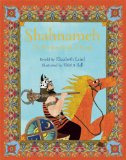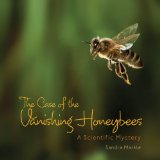Review of A Little Book of Sloth, by Lucy Cooke
 A Little Book of Sloth
A Little Book of Sloth
by Lucy Cooke
Margaret K. McElderry Books, New York, 2013. 64 pages.
Starred Review
Here’s children’s nonfiction at its incredibly cutest.
In a sleepy corner of Costa Rica there’s an upside-down world where sloth is a virtue and not a sin. A sanctuary – the first in the world – devoted to saving this much maligned animal.
Home to one hundred and fifty orphaned and injured sloths, Slothville is an idle idyll where the sloths’ every whim is catered for by the celebrated sloth whisperer Judy Arroyo.
This book reveals some of the secrets behind the sloth’s smile and introduces you to a handful of the sanctuary’s superstar sloths. I think we have much to learn from their mellow ways. So take a break from the hectic world around you, kick back, relax, and enjoy hanging with the sloths.
The picture-book-sized pages in this book feature large photographs of baby sloths. Baby sloths are cute. Very cute. Along the way, we learn lots of facts about sloths, like the two main types of sloths and how much of their lives they spend resting (70%). Did you know that sloths aren’t monkeys or bears, but Xenarthrans? I didn’t until I read this book.
Sloths are born needing hugs, so orphaned sloths are given a stuffed toy to hug in place of their missing mother. We get to see pictures of Mateo trying to decide in a basket of stuffies, before he settles on Mr. Moo, a stuffed terry cow. We’re told, “If any of the other baby sloths tries to sneak a Moo hug, a fight breaks out – a very, very slow fight, in which the winner is the last sloth to stay awake.”
This book is hard to resist, simply from all the pictures of the cuddling, laid back sloths. Reading it may be all it takes to get you to join the Sloth Appreciation Society.
slothville.com
slothsanctuary.com
Find this review on Sonderbooks at: www.sonderbooks.com/Childrens_Nonfiction/little_book_of_sloth.html
Disclosure: I am an Amazon Affiliate, and will earn a small percentage if you order a book on Amazon after clicking through from my site.
Source: This review is based on a library book from Fairfax County Public Library.
Disclaimer: I am a professional librarian, but I maintain my website and blogs on my own time. The views expressed are solely my own, and in no way represent the official views of my employer or of any committee or group of which I am part.








